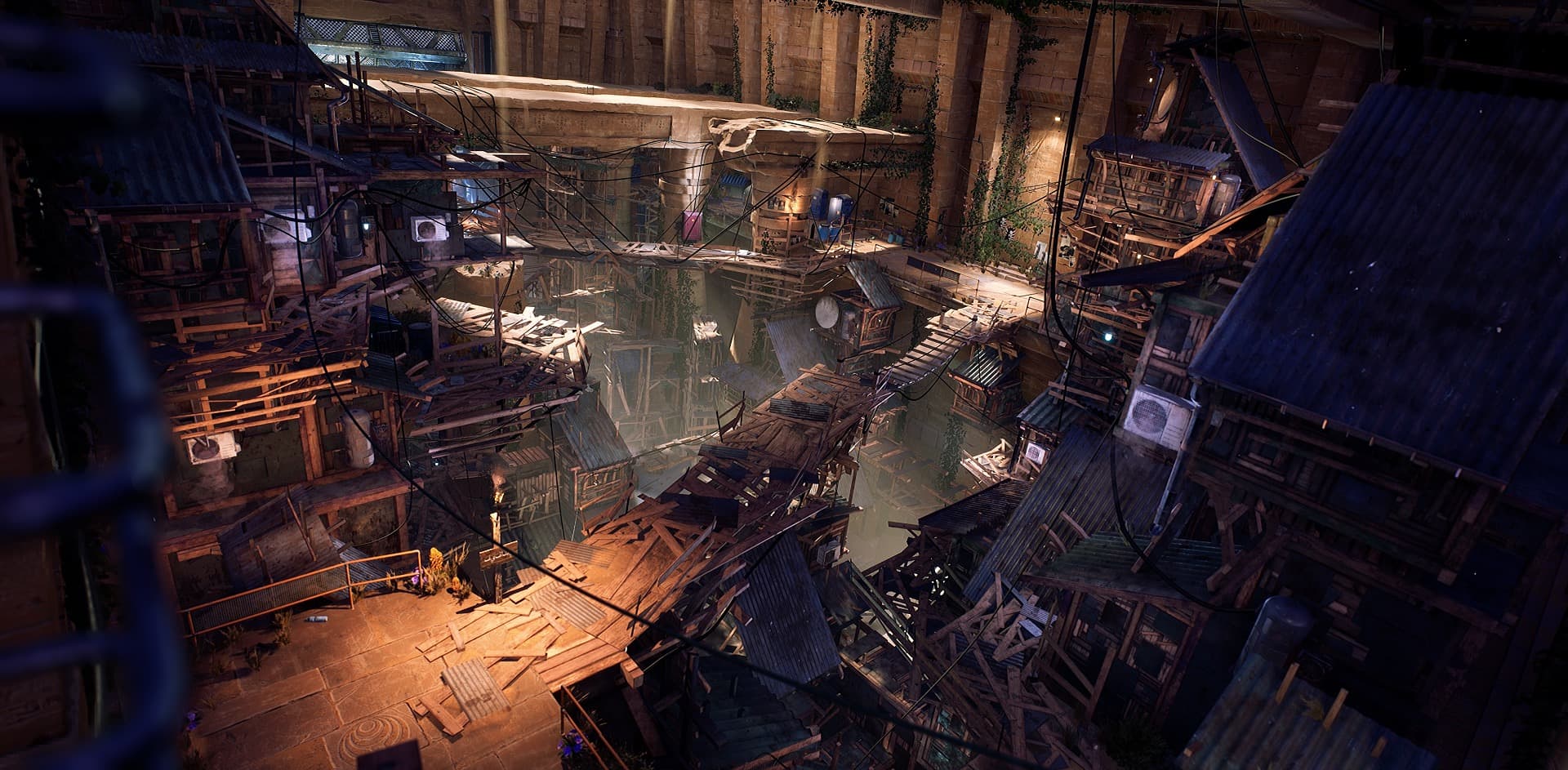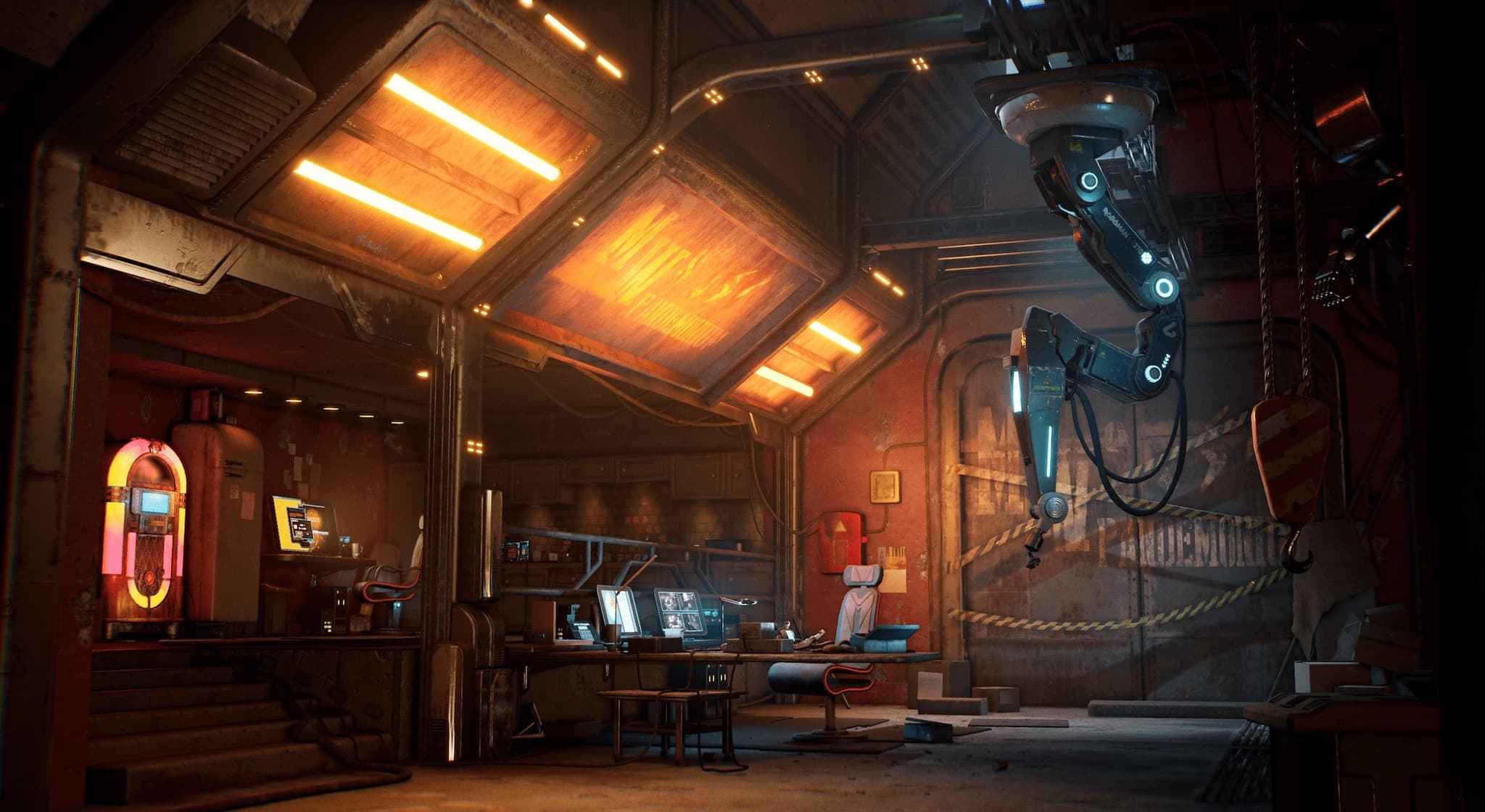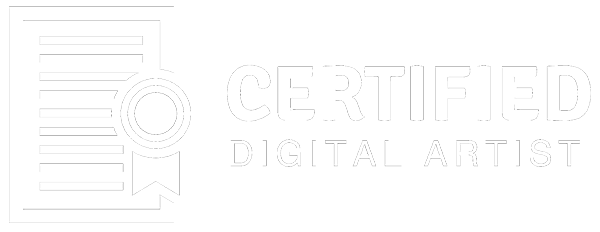What is an Environment Artist?
Environment artists take direction from concept artists and directors, to turn ideas either from concept or spoken into 3D Environments for games. Environment artists work hand in hand with the level and game designers to ensure all the elements that affect gameplay are considered and incorporated into the environment.
There are times where you’ll also be involved with other departments, like lighting and VFX to ensure content is being delivered. These virtual universes can range from fantasy to hyper realistic and everything in between. What artists have to work with can also range from a sketch, photograph or even green screens.
Entry Level Skills & Capabilities
The following information outlines the exact skills you need to demonstrate as a Certified Digital Artist. You must be proficient and capable of completing all these skills and capabilities.
1. Communication
- Strong communication skills to pitch and describe your concepts
- Willing to show progress frequently and able to receive and discern feedback objectively.
2. Reference Gathering
- Ability to take a brief and collect visual references to help explain your plan
- Clearly extract the main storytelling points from a script or brief
3. General
- Clearly extract the main storytelling points from a script or brief
- Working from storyboards and concept art to develop environments
- Understanding the game features for creating a game-based environment, enhancing the overall look and style of the game, and making it a fun-based experience
- Bonus: Creating 2d and 3D prototypes and mockups
- Bonus: Demonstrate knowledge of architectural styles
- Bonus: Understanding of environments and the anatomies of natural and unnatural biomes.
4. Modeling
- Create models with UVs of organic environment objects (eg: rocks, trees, shrubs)
- Create models with UVs of hard-surfaced objects and props (eg: crates, weapons, furniture and household items)
- Demonstrate a good sense of scale with elements in a given environment
- Ability to optimise high poly meshes to create low poly 3D game assets.
- Model environments with the understanding of what needs to be modeled in and what needs displacement maps
- Ability to assist in modeling game levels and larger-scale environments.
- Bonus: Generate displacement and normal maps from scan data and high-resolution models.
- Bonus: Ability to capture and work with photogrammetry image sets and convert them to usable 3D geometry and digital cameras.
5. Texturing / Materials
- Modeling and texturing the design to suit the real-life form, detailing the scene with painting textures for maintaining the quality requirements of the game developer.
- Assist in texturing of game levels and larger-scale environments.
- Create usable textures from photographic reference
- Ability to export Cameras from 3D software and Import cameras into 3D paint software.
- Capable of baking reference photography to a usable texture.
- Bonus: The ability to create detailed textures in a Physically Based Rendering (PBR) system.
- Bonus: Ability to create stylized smart materials and textures in Substance 3D Painter, Substance 3D Designer, 3DCoat, or Houdini.
6. Lookdev / Lighting
- Understanding of physically based shaders.
- Understanding of lighting, color and scene composition.
7. Layout
- Mapping out scenery elements and props that help drive the story of the game: Understanding spatial relationships, and how to apply basic graphic design principles to a 3d space.
- Bonus: Level editing/optimisation: Technical processes like poly-count optimization, image compression, batching, and collision systems.

Traditional Proficiencies
- Proficient in using drawing tools such as pencils, pens, and paper.
- Proficient using painting tools (easels, paintbrushes, paints)
Software Proficiencies
Ability to use one or more of the following software packages:
- Unreal Engine
- Unity
- Autodesk Maya
- 3ds Max
- Substance 3D Collection
- Marmoset Toolbag
- ZBrush
- Quixel
- World Machine
- Topogun
- Adobe Photoshop & Illustrator
- Clarisse
- Bonus: Nuke
- Bonus: Houdini
- Bonus: Marvelous Designer
- Bonus: Speedtree
Prerequisites
These skills are equally important in terms of your understanding and ability to do this role. Although they are not skills or knowledge that is officially certified, it will be obvious to recruiters and Certified Digital Artist (CDA) reviewers if you have knowledge in these areas.
General
- Understand the principles of storytelling: you will need to tell a story through your images
- Game or film knowledge: Have a strong and wide-ranging interest in PC, Console, Mobile Games and films.
Art Fundamentals
- Perspective
- Lighting
- Composition
- Anatomy
- Colour Theory
- Form
Life Skills & Communication
- Thinking Critically
- Communication Skills
- Conflict Management
- Taking initiative
- Collaboration
- Time Management

Portfolio Projects
Roles in Creative Media & Entertainment industries are quite different to traditional roles. As a Digital Artist, you need to prove your creative and technical abilities which require an online portfolio filled with projects that showcase your work. One or more of the following projects should be included in your digital portfolio to demonstrate your skills and abilities to perform the required skills of this role.
- Detailed props textured in 3D painting software. Stylistic or realistic depending on where you plan to try to get hired. Fully completed assets high, low, unwrap, textured and rendered both organic and inorganic to show range.
- The ultimate beginner portfolio would showcase proficiency in more than 1 style and include both organic and hard surface props.
- A small vignette such as a corner of a room, or a small set showcasing props you've modeled and textured, arranged in a pleasing way.
- 3 x solid "build to camera" environments. Building to a single view can reduce the development time of an environment substantially which allows for time to polish and really nail a beautiful result instead of spreading yourself so thin to fully flesh out entire spaces and all locations within an environment.
- Find an interesting environment concept, and create it in 3D from start to finish. Create the whole space with tileable maps, 1-to-1 bakes, and remember to have a centrepiece hero prop.
- Production paintings demonstrate the ability to use light, colour and composition as well as How the environment will look and how the camera will move through it.
- Breakdowns of processes and progress shots to show you know what you are doing and can do more than follow tutorials
- Create projects that have different lighting schemes, ones that take place at different times of the day, as well as having an indoor and outdoor scene. Having a piece that takes place during the nighttime and another that takes place during the day offers contrast and shows an audience that you are able to light and build a scene differently based on the time of day or setting. Doing this will also add color contrast and variety to your portfolio
- Showing that you are able to tell a story with as little assets is incredibly important. You do not have to create a huge level for your personal project but create a space/diorama that is manageable enough to fill and inject environmental storytelling into.
- Bonus: Hero Assets: Full process on at least a few "hero" assets showcasing strengths
- Bonus: In-engine renders showing the final render as well as how your scene looks in a detailed lighting model.


